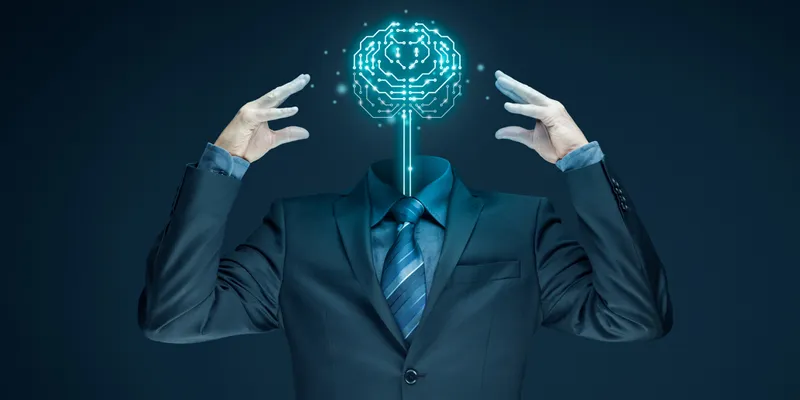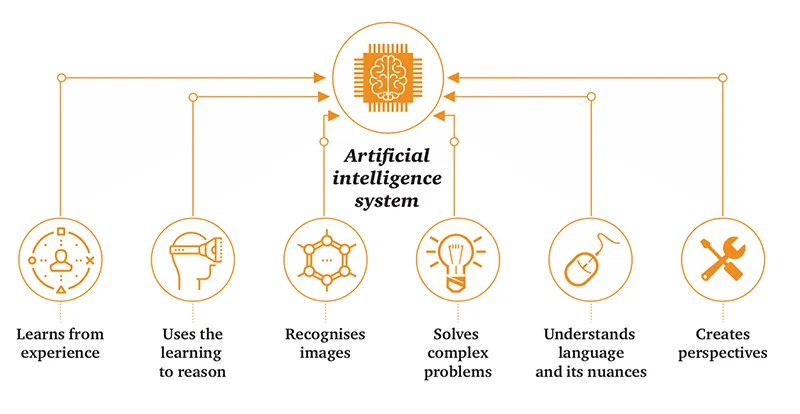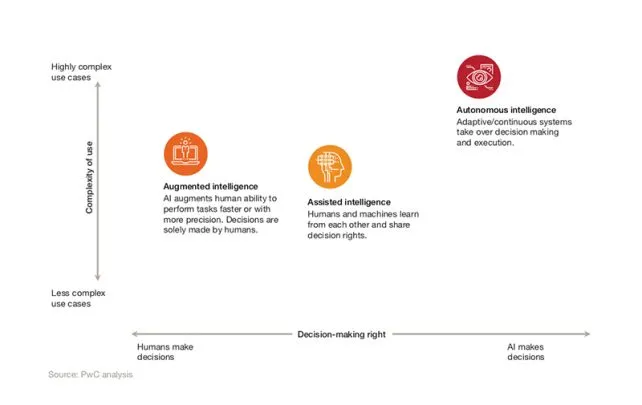Drop in mathematical skills pushes India further down in the AI race
Though India is making rapid progress in terms of technology, companies and researchers are yet to utilise the full potential of AI.
The math is not adding up for India, as far as the global artificial intelligence (AI) race is concerned. According to a report released by LinkedIn, the US has a clear lead in numbers with 850,000 AI engineers, followed by India and China with 150,000 and 50,000 engineers. With China and the US going head to head on AI, India has been relegated to playing catch up.
For instance, AliBaba’s AI software beat Stanford students in a test of 100,000 questions, scoring 10 basis points more than its human competition. Its Chinese counterpart TenCent sets of an AI lab in Schenzen back in China the government announced that it is going to set up an AI centre of excellence worth $2 billion and is going to use the technology from military to civil applications. So while China prepares to make AI the future of human progress to liberate humans from doing repetitive tasks, the key question is what stops India from up-skilling?

China is investing heavily in mathematics while in India we don’t have many Mathematics PhDs. Clearly, not enough effort is going into this direction, and Indian could slip up even further if this is not adequately addressed.
“This indicates two things - firstly, the numbers mentioned are skewed due to sampling error in favour of English speaking countries and second, the data presented does not take into consideration of quality of engineers and technological progress," says Nishith Rastogi, founder of Locus. He adds that moving past that, engineers today are a globally mobile force, and the best way to attract more engineers in the field of Artificial Intelligence and Machine Learning is to create enough opportunities to retain them rather than concentrating on training the workforce.
What is AI? At a principal level, you are replacing human decisions with the algorithmic decisions. India, so far, used to lead in imparting Knowledge Services and can catch up with global appetite for AI.
If you ask Mohandas Pai, founder of Aarin Capital, he says, “India pays people to remain poor in many industries. While this situation is in industries such as agriculture, there is a similar problem in other industries and we can draw a parallel with how technology will impact other industries. We have to focus on preparing our engineering work force to focus on high value generating technologies.”
Even Flipkart, India's largest e-commerce company, is putting in efforts to make the talent pool richer in India to drive innovation. "Industry must work in tandem with academia of higher education that offer top notch courses to create a wealth of opportunities that will engage the next generation of AI professionals. We need closer collaboration between industry and with colleges and institutes so that problem-solving is not limited to a small set of people working in the corporate space," says Mayur Datar, Chief Data Scientist at Flipkart. He adds that India needs an ecosystem of high tech product industry that focuses on much more on research and innovation. It not only strengthens our AI talent pipeline but it also helps us take the lead in cutting-edge AI work.
However Flipkart too concedes that despite being one of the most innovative product companies and one of the top brands in India, a company with access to data about 100 million or more Indian users and compute resources they struggle to hire AI engineers.
The questions to ask is how are we going to go about it?
“We need to continually evolve to stay ahead in the global AI revolution or risk losing out here as well,” says Nishith.
AI is about several pieces. On one level it is machine learning, where software can be written to recognise patterns and continue the repetitive task without needing human beings. The second is deep learning, where the software takes data from voice, vision (cameras) and text to recognise patterns and is taught to predict outcomes or prescribe solutions. But, real AI where the machine subverts a human to make decision is still some time away. However the rate at which things are changing is almost here. Just try your Google Assistant and ask it several questions. Say, “Hey Google, you are my best friend,” then the friendly womanly voice goes “This is perfect because you are my best friend too.” The voice smiles with an emoji. Then she says, “I’m pretty sure this means we can tell each other secrets now.”
While this is very playful and nice, the applications for industry and consumers are enormous because you no longer have to wait for a human being to search for an item that you are looking for.

This is where AI begins and data is everything. Global Corporations and governments are pushing for this technology to take faster decisions or even in some cases experiment with the possibilities of replacing humans for good. Directly, it affects the 700,000 engineers in the four top tier IT Services companies in India. So jobs like testing process flow in software specs, given by global businesses, will, in less than five years, give way to intelligent software to run these tests by themselves. The need for huge teams will go away and there will be a need for sharper teams that can add value to businesses. “People need to have a systems level approach while building software, which means more industry knowledge or have strong programming skills,” says Ashish Gupta, VP Engineering at Rubrik India.
One only has to look at concepts like the retail store of Amazon called “Amazon Go” to see the power of AI and connected retail processes. Here you actually don’t need human beings to serve customers and even receive payments. “The future is in software, engineers have to understand tools that can help them heavy lift data and build applications,” says Ashish.
The Indian IT Services industry is about $180 billion and has to figure out how it will evolve and it is about the best time to train a whole set of students in to independent thinking and take new challenges. Unfortunately, this remains an irony because Indians want to do their own thing once they learn the subject. For that to change IT Services companies will need to rethink their old business model where IT Services was about implementing client specifications, they should focus on transformational IT services. If you look at the quarterly earnings of Wipro and Infosys, both companies say that 25 percent of their business cames from digital services.
Now that’s where being a leader in AI adds that extra value. When this happens clients make IT services companies a partner in transforming business processes in the digital era. Now, that’s where we have a need gap, they cannot seem to retain the best or train the rest. “I have been scouting for AI engineers and those who are good at AI have started their own company. There are not more than 100 AI engineers in India who understand the subject completely and can take programming challenges,” says Kamal Karanth, CEO and co-founder of Xpheno.
Now Nishith of Locus adds that he employs PhDS in data sciences to create data models and then work with engineers to build services. So companies are going to colleges, but cannot find the talent.
What technology companies are doing?
“Companies and colleges in India must take stock of the alarming gap in the demand versus supply of AI engineers,” says Ashish Mital, AVP Digital Platform, Digital Transformation Services, Sasken Technologies.
He adds that most of the Engineering R&D spend for Sasken’s customers are in the space of IoT, Predictive Maintenance and Robotic Process Automation. “Success of all these programs depends heavily on the usage of AI to build analytical models. India is already losing its offshoring competitive advantage to near shoring in Eastern Europe and availability of English speaking talent in China. If we don’t take this leap of faith now, we might end up playing catch-up,” says Ashish Mital.
There should be a multi-pronged approach to meet the gap:
- Introduction of AI & ML concepts at the college level or creating vocational courses and scholarships in partnership with the industry
- Online learning or e-learning market is really booming in India. This could be a very important channel in bridging this gap. These could offer specialized training programs for people with various levels of exposure to gain expertise in AI during after-office hours.
- HR & Learning departments within companies should motivate the bench to take up courses on AI while they are off projects.
Karnataka has set up a centre of excellence in AI recently with Nasscom, Intel and IBM to tap startups that are building AI solutions and equipping ideation at the AI level. “The government can set up platforms like this. But, it is industry and academia that must come together to create value. AI can crunch data faster and insights can be generated from several applications to benefit governments and citizens,” says Priyank Kharge, IT Minister of Karnataka.
Unfortunately, we are losing the race to China and there is a larger root to the problem, which is the lack of Mathematical skills.
“ Before any programming I look at a graduate’s skill in mathematics. If they are grounded in mathematics then training them in things like AI is easy,” says Madhusudan K M, CTO in Mindtree Ltd, a $780 million dollar IT Services firm. He says Mathematics allows people to create data models on which engineers can build on and that is the foundation to building a culture of AI. He says AI allows other engineers to take over and build services on top of and therefore services like new age apps and data analytics will be the future. There are tools from AWS, Microsoft and Google which allow engineers to heavy lift data and focus on building service. Mindtree has also a created a team of 60 senior people to sell solutions around AI, Blockchain and IoT. “These are senior people who are part of the global team who understand how to conceptualise new age solutions around technologies like AI,” says Madhusudan.
Today engineers should be able to use the following data libraries and tools:
- Google’s TensorFlow
- Amazon Sagemaker
- Microsoft Cortana
- OpenNN
- ApacheSpark MLIB
- Caffe
- Samsung’s Vele
- EclipseDeep Learning tools
“Engineers should learn Java, C++, Scala and python. Each of these cater to different applications of AI,” says Sunil Kumar, co-founder of Clorik, a video content discovery platform.
Even in Infosys, the second largest IT firm in India, new opportunities continue to evolve rapidly in areas like user experience, cloud-native development, AI and industrial IoT, Big data, analytics and Automation. “In this environment, it is important that employees showcase high learnability and the ability to re-skill themselves rapidly,” says Richard Lobo, EVP and HR Head, Infosys Limited.
Infosys as of the last three years has embarked on a big journey of change. They are keeping their employees up to date with trends in technology to reskill and upskill themselves. They have embarked in training their employees in:
- Design Thinking is a key ingredient in their training curriculum and 142,218 Infoscions have undergone the training. The company plans to cover the remaining employees in the near term.
- Infosys last year finished training 3000 people on AI technology and of that 2100 on the Nia platform. The company is also conducting training in AI, Agile & new technologies. They have already trained top 5000 project managers on new kind of process skills such as Agile and Scrum development. They have built a Digital Tutor with videos – currently there are over 3500 videos available on it and more than 100,000 Infoscions have taken advantage of it. They have also partnered with Udacity and Coursera on bringing unique different kinds of skills.

The future
Different people, different strokes is what one can say about India’s AI journey. According to a PWC/Assocham report Public policy in India on the application of AI has thus far lagged when compared to AI’s subtle usage by start-ups who have so seamlessly blended AI into the services provided to customers. If we look at the applications that we use/have used at some point of time (e-commerce platforms, chat services, social media services and so on), they have all been employing AI in some form and at some level of maturity or the other. Though India is making rapid progress in terms of technology, companies and researchers are yet to utilise the full potential of AI. While the USA is currently in the process of implementing laws concerning driverless vehicles, India still lags behind. The report further adds that instead of waiting for technology to reach a level where regulatory intervention becomes necessary, India could be a frontrunner by establishing a legal infrastructure in advance. Alternatively, early public sector interest in AI could trigger a spurt of activity in the AI field in India.
South Korea has announced a $840 million public private partnership for AI projects. In the USA, AI related projects are part of business and military interests. “AI is just hype,” Narayana Murthy, founder of Infosys said in a press conference. But, in Silicon Valley, Andy Jassy and Larry Ellison, the former being the CEO of AWS and the latter the Chairman of Oracle, are clearly building machine learning algorithms that are disrupting IT and data sciences. Andy Jassy told Your Story, “There is a lot of talk that AI will take away jobs. But we believe it will create jobs. There is so much work we do in technology that we are not really able to fill a lot of these new roles that we are creating. Clearly, there is an opportunity and it is unfair to say AI will take away jobs. I am so glad that these repetitive tasks that we call jobs will go away.”
Remember Andy is talking from an IT industry perspective. There are larger social and macro-economic situations that will be impacted by AI, which is another story. For now we need AI engineers to enhance the value of our engineering services and then slowly move its applications to other industries like agriculture and smart cities.
In the end AI is not about replacing people, but it is about using software to replace humans in repetitive jobs. So, what do humans do next? Well, some can programme and maintain these AI applications. That may be about 10 percent of the engineering ecosystem. What about the rest? This is a question that 1million engineering students that pass out every year, in India, must ask themselves and then the 1000 odd engineering colleges must answer to parents who send their kids to University about employability.







